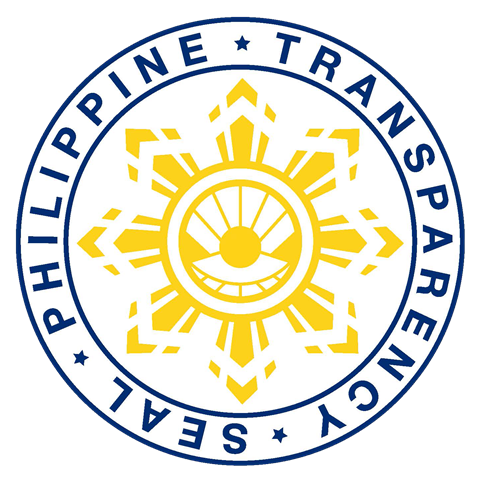Regional Director Dionisio C. Ledres, Jr.
NEDA Region 2
Delivered by:
Assistant Regional Director Ferdinand P. Tumaliuan
NEDA Region 2
News Conference on the 2022 Report on the Economic Performance of Region 2
Pulsar Premier Suites, Buntun, Tuguegarao City
April 27, 2023 at 10:00 a.m.
Our partners from the Philippine Statistics Authority headed by Officer-In-Charge Regional Director Girme Bayucan, colleagues and friends in government, the private sector, and the media, a pleasant morning.
I am pleased to announce that the Cagayan Valley’s economy remains strong with the whole government working together with the private sector, local government units, development partners, and civil society to bring back the economy to its high-growth trajectory and enable economic and social transformation for a prosperous, inclusive, and resilient society.
The improved COVID-19 risk management, continuous vaccination rollout, strict observance of health protocols, easing of quarantine restrictions, the return of businesses to normal operations, and resumption of face-to-face classes created a positive economic outlook and increased business and consumer confidence. This in turn boosted economic activities, created more jobs, and reinvigorated our industries.
We took the lessons from the COVID-19 pandemic and the recent global and domestic development challenges. Our strong economic growth performance in 2022 proves that our calibrated policies, strategies, and programs have helped put the economy back to recovery and on track to achieving our region’s long-term vision to be the gateway to East Asia, our economy driven by agro-industries, manufacturing, IT-based industries, adventure, farm and nature tourism, where people live in peace and prosperity.
Economic Performance
As reported by OIC Regional Director Bayucan, the Cagayan Valley’s economy grew by 8.0 percent in 2022, exceeding the 5.1 percent growth in 2021. Our growth rate is higher than the country’s GDP growth rate of 7.6 percent. Our 8.0 percent growth even exceeded our GRDP growth target of 5.8 to 6.8 percent for 2023.
In 2022, we were the sixth fastest growing region in the country. The main contributors to the growth were: Wholesale and retail trade, repair of motor vehicles and motorcycles which grew by 12.6 percent; Construction by 11.9 percent; and Mining and Quarrying by 71.0 percent.
The region’s GRDP at constant 2018 prices, grew to PHP 421.1 billion from PHP 389.9 billion in 2021, equivalent to an increase of PHP 31.2 billion. Our GRDP already surpassed the 2019 pre-pandemic GRDP of PHP 411.5 billion. We can say that we are on the path to economic recovery and we are confident that we will remain on our high economic growth trajectory.
The Agriculture, Industry, and Services sectors all registered growths in 2022. The Services sector which accounted for 44.3 percent of the GRDP, grew by 11.0 percent. Services growth was mainly driven by Wholesale and retail trade, repair of motor vehicles and motorcycles, Transportation and storage, and Education.
The resumption of full face-to-face classes in public schools, the return of businesses to normal operations, the expansion of return-to-office, and the lifting of passenger capacity restrictions in public transport increased consumer demand and boosted the economic activities in the region. The May 2022 national and local elections also stimulated more economic activities and encouraged more travel activities to communities.
Further, the tourism industry is on the recovery path. The region welcomed more than two million guests in 2022, about 291 percent more than the arrivals recorded in 2021, bringing in PHP 4.82 billion in tourist gross receipts. However, the recorded tourist arrivals for 2022 is still 36 percent lower than the pre-pandemic figures.
To boost the tourism industry, the DOT Region 2, in collaboration with LGUs and tourism industry stakeholders launched four tourism circuits in the region, namely, “Quirino – Your Basket of Happiness”; “Feel the Vibe Nueva Vizcaya”; “Santa Ana – Your Adventure Paradise”; and “Zininnaga na Tuguegarao.”
The Industry sector which accounted for 27.9 percent of the economy, grew the fastest by 11.5 percent. Main drivers of the industry growth were Construction, and Mining and Quarrying. With the reopening of the economy and improved business and consumer confidence, construction activities increased and mining operations were fully resumed.
The production of copper concentrates and nickel increased in 2022. However, the production of gold and silver fell slightly. The revenues from gold and silver jumped significantly as a result of rising demand and higher market prices. The resumption of operations of the OceanaGold and the Isabela Nickel Mining Project contributed to the increased mineral production and revenue generated.
The Agriculture, Forestry, and Fishing Sector which accounted for 27.9 percent of the economy also grew but a slower pace by 0.5 percent. The main growth drivers include Crops, Support activities to AFF Sector, and Fishing and Aquaculture.
The Cagayan Valley maintained its status as the top corn producer and second highest palay producer among regions in 2022. The region contributed 23.7 percent and 14.8 percent to the country’s overall corn and palay production, respectively.
Palay production slightly increased due to production increases in Batanes, Cagayan, and Isabela, while corn production increased across all provinces. Cattle production increased, but carabao and goat production decreased. Hog production decreased significantly due to African Swine Fever or ASF outbreaks. Chicken production decreased during the year but chicken egg production increased. Further, aquaculture production increased, but commercial and municipal fisheries production decreased due to fuel costs and adverse weather conditions.
The ASF continued to affect the hog production industry, as hog production shrank by 19.2 percent. Carabao production also faced further reduction. In December 2022, the Department of Agriculture confirmed cases of anthrax disease in carabaos in the province of Cagayan. Vaccination of carabaos and cows are being undertaken to prevent the spread of the virus.
Moreover, the Department of Agriculture remains on guard against the infestation of Avian Flu among chickens, after thousands of layers were culled in Isabela in 2022. This disease, along with rising prices of production inputs, particularly feeds, have caused a rise in egg prices.
Government interventions and recommendations
Amidst the scarring effects brought by the COVID-19 pandemic and the recent global and domestic development challenges, the government remains committed in taking proactive measures to sustain our high economic growth and achieve economic and social transformation.
On January 27, 2023, President Ferdinand Marcos Jr. signed Executive Order No. 14, series of 2023, approving and adopting the Philippine Development Plan or PDP 2023 to 2028. The PDP serves as the country’s overall blueprint in development planning for the next six years. The EO directed all government offices, LGUs and SUCs to adopt and disseminate the PDP and undertake efforts leading to its full implementation.
Anchored on the Administration’s 8-Point Socioeconomic Agenda, the Ambisyon Natin 2040, the 2030 UN Agenda for Sustainable Development, and the region’s long-term vision, the Cagayan Valley Regional Development Plan or RDP 2023-2028 was formulated. The Cagayan Valley Regional Development Council or the RDC2 approved the RDP 2023 to 2028 through RDC Resolution No. 02-03 series of 2023.
What makes the current PDP and RDP different from the previous Plans is the transformation agenda. The transformation agenda will be pursued by implementing six cross-cutting strategies namely, digitalization, enhancing physical and digital connectivity, promoting partnership with the private sector, servicification, dynamic innovation ecosystem, and greater collaboration between local and national government.
Similar to the PDP, the Cagayan Valley RDP has two major objectives. One is to build the capabilities of individuals and families and the other is to improve productivity and generate jobs in the production sectors of the economy.
The RDP contains the government’s socioeconomic policies, strategies, programs, and legislative priorities anchored on the President’s 8-point socioeconomic agenda. The 8-point socioeconomic agenda summarizes the priority goals of the government to address the country’s current pressing concerns. These are as follows:
- Protect purchasing power of families by (a) ensuring food security, (b) reducing transport and logistics cost, and (c) reducing energy cost to families;
- Reduce vulnerability and mitigate scarring from the COVID-19 pandemic by (a) ensuring capacity of healthcare in case of surges, (b) addressing learning losses, and (c) strengthening social protection;
- Ensure sound macroeconomic fundamentals by (a) enhancing bureaucratic efficiency and sound fiscal management and (b) ensuring a resilient and innovative financial sector;
- Create more jobs by (a) promoting investments, (b) improving infrastructure, and (c) ensuring energy security;
- Create quality jobs by (a) increasing employability, (b) advancing research and development and innovation, and (c) enhancing the digital economy;
- Create green jobs by (a) establishing livable and sustainable communities, and (b) pursuing green and blue economy;
- Ensure a level playing field; and
- Uphold public order and safety, peace and security.
To drive the region’s economy, major development strategies included in the RDP are as follows: (a) improving the productivity and resilience of the agriculture sector; (b) strengthening the linkage of the agriculture sector with industry and services; (c) promoting investments in manufacturing and IT-BPM industries; (d) developing and promoting agriculture, nature, adventure, and culture tourism; (e) promoting investments in alternative energy sources; and (f) improving land, sea and air transport.
Targets
Over the next six years, the development agenda of the Cagayan Valley Region will be guided by the following headline socioeconomic targets:
By 2028, economic output, as measured by the GRDP, will grow at a rate of 6.4 – 7.9 percent over the next six years. By the end of the Plan period, the Services sector is targeted to grow the fastest at 8.1 – 9.8 percent, followed by the Industry sector at 6.7 – 8.2 percent, and the Agriculture sector at 2.5 – 3.2 percent. The region will work towards maintaining a low unemployment rate of 3.2 – 3.5 percent over the next six years. The percentage of wage and salaried workers in private establishments to total employment will increase to about 47.0 – 50.0 percent by 2028.
All our efforts are intended to significantly improve the welfare of the people in the region. Our strategies are expected to result in the reduction of the number of poor population or incidence of poverty among population to 12.1 to 12.7 percent by 2028, from a high 15.4 percent in 2021.
Conclusion
Beyond the formulation of the PDP and RDP lies the greater challenge of implementing these Plans. Let me take this opportunity to encourage everyone whether you are from the national or local government, private sector, development institution, academe, media, and the civil society to support the policies, strategies and programs laid out in the Philippine Development Plan and the Cagayan Valley Regional Development Plan 2023 to 2028.
The successful implementation of the PDP and RDP rests not only on the efforts of the government but more importantly on the support of everyone. We look forward to seeing everyone’s action and contribution toward achieving our shared goal of economic and social transformation for a prosperous, inclusive, and resilient society.
We will continue to collectively strive for a matatag, maginhawa, at panatag na buhay para sa lahat.
Good day and thank you for listening.



